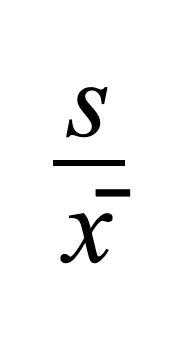Bus' Stats' - Quantitative Measurement Concepts
1/18
There's no tags or description
Looks like no tags are added yet.
Name | Mastery | Learn | Test | Matching | Spaced |
|---|
No study sessions yet.
19 Terms
Ordinal
Data
Nominal
μ
meanpopulation
x̄
meansample
σ²
Variancepopulation
s2
Variancesample
σ
Standard Deviation population
s
Standard Deviation sample
MAD (Def.)
Mean Absolute Deviation: The average of the sum of all absolute differences between each data point and the overall dataset’s mean
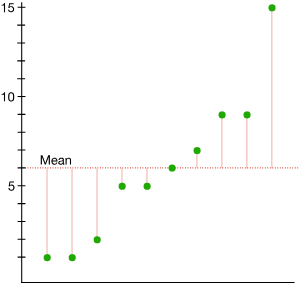
MADpopulation
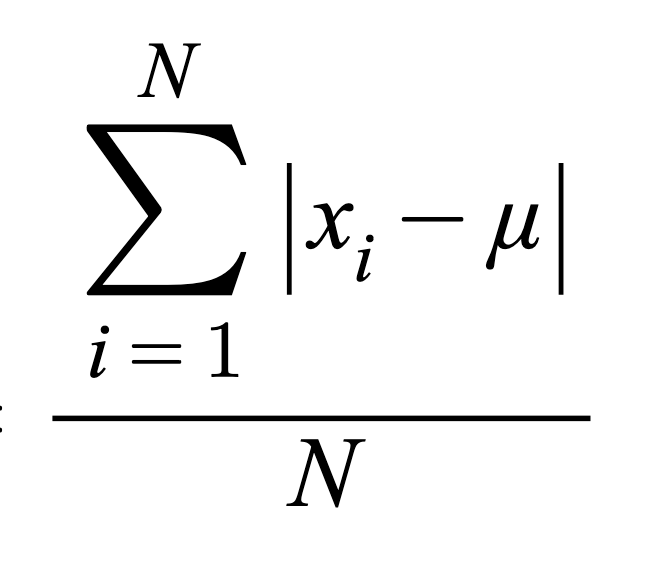
MADsample
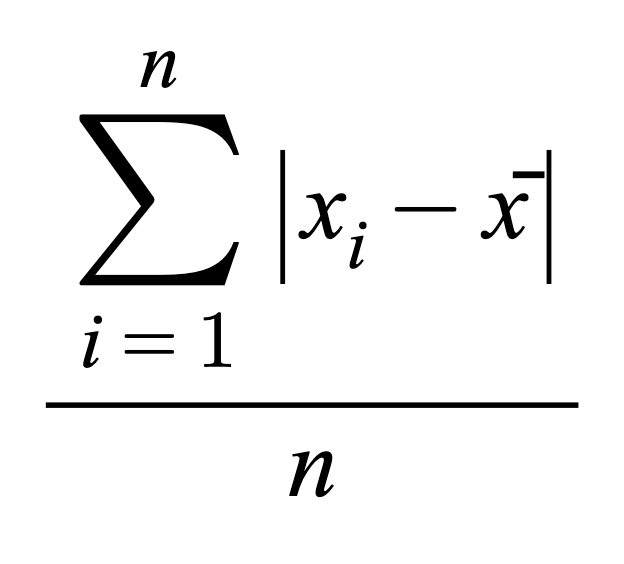
Variance (Def.)
A squared unit of measurement that is designed to be sensitive to outliers in datasets and used to measure volatility (usually risk) of a dataset through averaging the overall squared differences between each of the individual data points and the mean of the dataset. The less the value, the less the volatility; vice versa. The variance value (volatility) of one dataset is useful for comparing dispersion within that dataset or with other datasets ONLY when the other datasets share similar means and units. Variance values are the stepping stones to calculating the Standard Deviation of a dataset, which represents the ABSOLUTE volatility of a dataset, and is more tangible and intuitive for conceptualizing the volatility of real-life datasets.
Variancepopulation
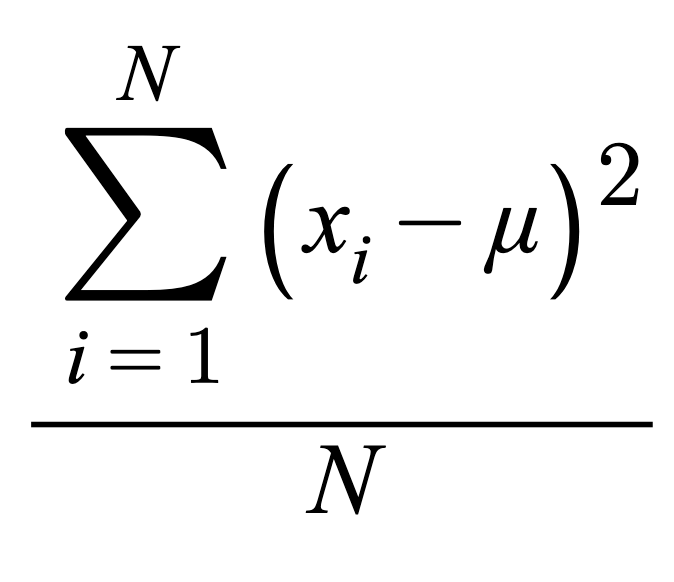
Variancesample
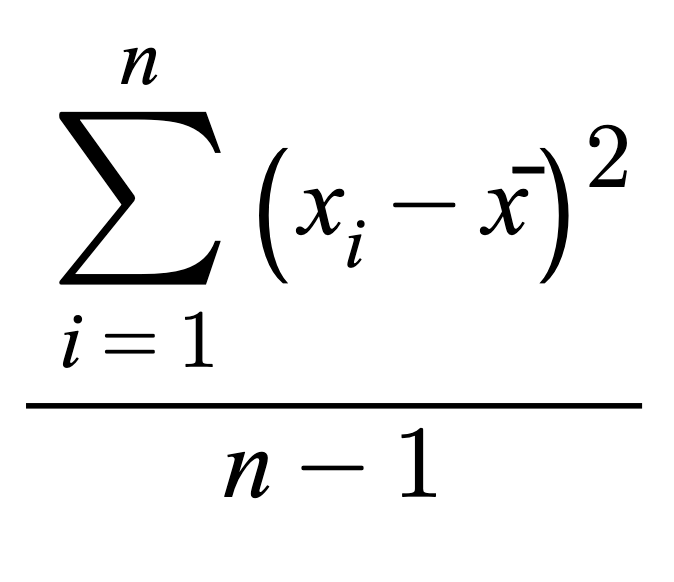
[ σ ] Standard Deviation population
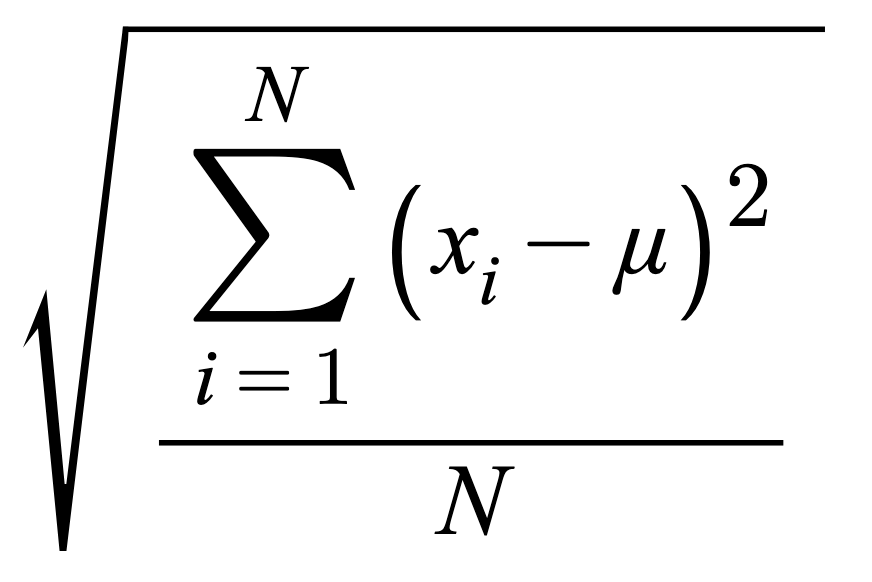
[ s ] Standard Deviation sample
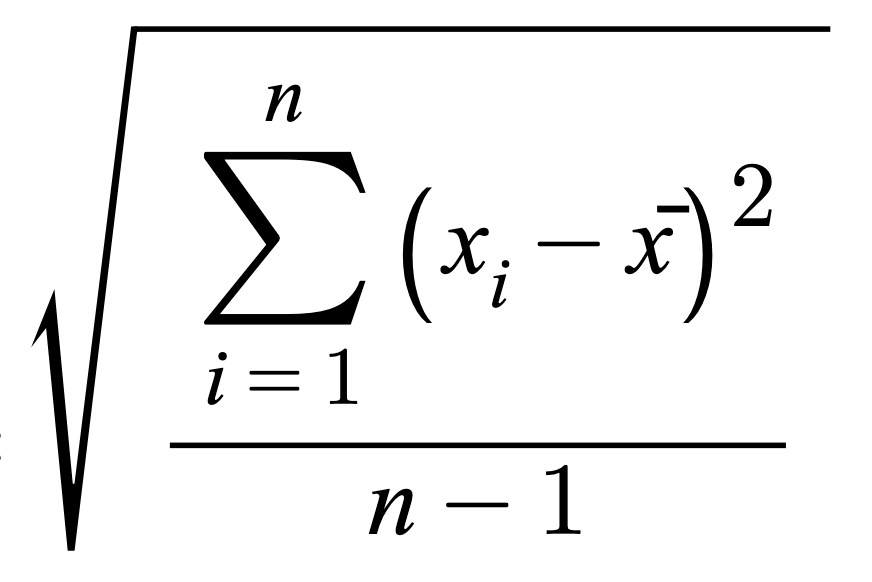
Coefficient of Variation (Def.)
A dimensionless/unitless measurement used to assess volatility relative to a dataset (risk per unit of return), which is utilized to compare volatilities between different datasets regardless of differences in means and units within those datasets.
Coefficient of Variation population

Coefficient of Variation sample
